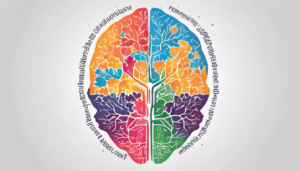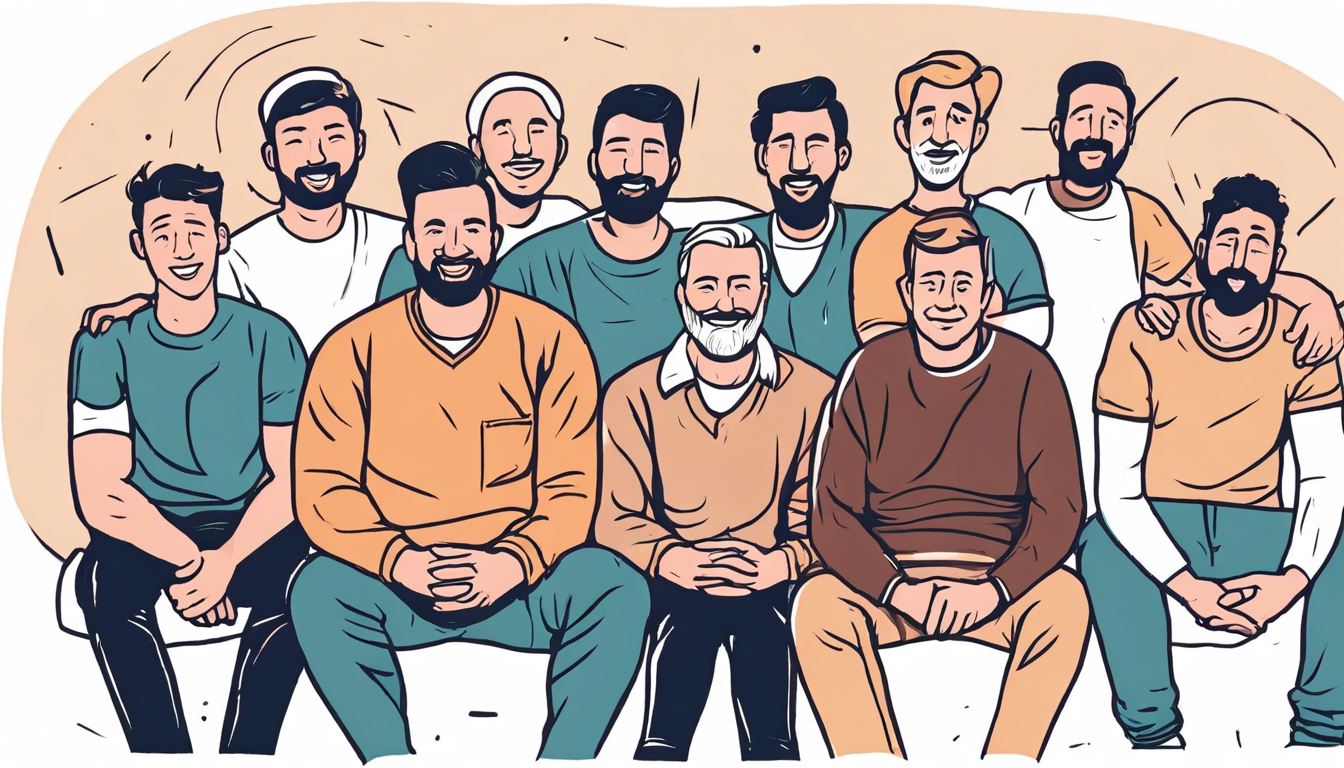The Benefits of Embracing Neurodiversity in Modern Society
In our modern world, we find ourselves grappling with ingrained instincts that once served as survival tactics but now hinder our progress. This is particularly evident in how we perceive and treat neurodivergent conditions such as autism, ADHD, dyslexia, dyspraxia, and dyscalculia.
The fear and discrimination associated with these conditions stem from a lack of familiarity and understanding rather than any inherent strangeness. We have evolved to fear the unknown, but as we gain knowledge and insight, we can move past our prejudices.
Marie Curie, a renowned scientist who exhibited neurodivergent traits, famously said, “There is nothing in life to be feared, it is only to be understood.” This sentiment resonates deeply when we consider the concept of neurodiversity. Essentially, it emphasizes that variations in human cognition and behavior are normal and should be embraced rather than feared.
As a society, we are gradually shifting our mindset to view neurodivergent conditions as integral parts of the human experience. By educating ourselves and gaining a deeper understanding, we are breaking down barriers and dispelling misconceptions.
Each new insight and discovery serves to demystify these conditions, reducing unfounded fears and promoting acceptance. We are beginning to recognize the value that neurodiversity brings to our society, appreciating the unique perspectives and contributions of individuals with different ways of thinking and perceiving the world.
Ultimately, the key is not to fear neurodivergent conditions but to seek understanding and celebrate the diversity they bring to our human family. Through acceptance and support, we can create a more inclusive and compassionate society that thrives on the richness of its differences.
Embracing the Diversity of the Human Brain: Understanding Neurodiversity
When we think about the human brain, it becomes clear that each individual possesses a unique composition of gray matter. This variation is a fundamental aspect of our biological diversity and is what makes the human experience so fascinating. Imagine a world where everyone thought, learned, and acted in the exact same way – it would be a monotonous and uninspiring place. Therefore, we should celebrate the incredible diversity in how our brains function, as it enriches our collective experiences.
Despite the inherent differences in the human brain, there exists a widespread lack of understanding surrounding these variations. This lack of understanding has perpetuated fear and anxiety, leading to stigma, isolation, and other challenges for individuals who fall within the spectrum of these variations – a group that research suggests encompasses at least 15 to 20 percent of the population.
By acknowledging, accepting, and honoring these diverse ways of thinking as a normal part of human existence, we align with the concept of neurodiversity. This shift in perspective has the potential to catalyze profound changes, opening doors to a more inclusive and compassionate world. Viewing neurological differences not as defects to be corrected, but as unique traits to be supported, enables us to embrace and accommodate those whose neurological makeup differs from our own. It empowers us to understand their needs, integrate them more fully into our communities, and provide the necessary accommodations and assistance they require.
Neurodivergent individuals are an integral part of our lives, even if we may not always recognize or understand their unique neurological traits. These differences manifest in various ways – from communication and social interactions to processing numbers and letters or reacting to stimuli such as light and sound. By paying attention to these nuances, we can gain a deeper appreciation for the full spectrum of human neurodiversity and foster a society that values and celebrates the rich tapestry of cognitive differences among us.
Challenging Assumptions and Embracing Neurodiversity: A Call for Understanding
It is crucial not to hastily judge or assume someone’s neurodivergent condition based solely on surface-level observations of their behavior or cognitive patterns. Our perceptions of others are often clouded by personal biases and inaccurate assumptions, leading to stigmatization, reduced empathy, and missed opportunities for connection. These repercussions not only affect the individuals involved but also strain the overall relationship dynamic between them.
Video producer and fashion writer Rian Phin, a notable figure recognized for her sustainable fashion aesthetic and profiled in esteemed publications such as Interview magazine and Vogue, sheds light on this issue. Phin, who identifies as Black, candidly addresses the misperceptions surrounding autism, emphasizing that one’s preconceived notions of what autism “looks like” are often misguided. She challenges readers to consider the lack of diverse representation of autistic individuals in mainstream media, highlighting the importance of broadening our perspectives to encompass the true diversity within the neurodivergent community.
Phin’s message underscores a prevalent problem: society’s tendency to form limited and stereotypical views of neurodivergent individuals, largely influenced by inaccurate media portrayals. This narrow outlook poses significant obstacles for neurodivergent people and their families as they navigate the quest for understanding and support in a society that often fails to recognize their unique needs and strengths.
As we venture into discussions around neurodiversity, it is essential to familiarize ourselves with key terms that will aid in fostering a more inclusive and informed dialogue:
- Neurodistinct: An alternative term used to describe individuals who are neurodivergent, highlighting their unique strengths and perspectives.
- Neurodivergent: Refers to individuals whose brain functions differently from the majority, emphasizing the diverse cognitive processes that exist within the human population.
By embracing these terms and the broader concepts they represent, we can take meaningful steps towards dismantling stereotypes, fostering empathy, and building a more inclusive society that values and supports the beautiful spectrum of neurodiversity among us.
Exploring the Diversity Within: Unveiling the Rich Tapestry of Neurodiversity
Unpacking Key Terminologies in the Realm of Neurodiversity
In our quest to delve into the intriguing realm of neurodiversity, it is paramount to grasp the foundational concepts and terms that shape this discourse. Here’s a breakdown of essential terminologies that will guide our exploration:
- Neurodiversity: Refers to the broad spectrum of variations in brain function and behavior observed among all individuals, highlighting the uniqueness and diversity within the human population.
- Neurofamily: Describes a family dynamic in which one or more members exhibit neurodivergent traits, emphasizing the significance of understanding and supporting diverse cognitive processes within familial setups.
- Neuroinclusive: Denotes an inclusive approach or environment that actively incorporates and accommodates individuals with diverse brain functions, fostering an atmosphere of acceptance and support for neurodivergent individuals.
- Neurological: Pertaining to aspects related to the nervous system, including the brain and spinal cord, and how these components influence an individual’s behavior and overall functioning.
- Neurotype: Categorizes groups of individuals based on similar brain functioning and associated traits, encompassing variations such as ADHD, autism, and dyslexia to capture the diverse cognitive profiles within the population.
- Neurotypical: Describes individuals whose brain functions align with the majority of the population, highlighting the variance in cognitive processes and behaviors among different individuals.
- Spectrum condition: Represents a category within neurotypes that encompasses a range of diverse brain traits under a unified label, recognizing the individuality and complexity of each person’s cognitive makeup. It’s likened to a galaxy of stars, where each individual possesses a unique mix of traits, as opposed to a linear progression from minimal to extensive traits.
The Intricate Interplay of Neurodiversity and Biodiversity
Neurodiversity, with its multifaceted tapestry of brain function and behavior, mirrors the intricate ecosystem of biodiversity present in our natural world. Just as biodiversity celebrates the abundance of life forms that enrich our planet, neurodiversity underscores the variety and uniqueness of cognitive processes and behaviors within the human species.
The concept of biodiversity, although formally coined in the 1980s, traces its origins to a longstanding scientific appreciation for the diverse array of living organisms populating our Earth. From estimates ranging from 2 million to a staggering 100 million distinct life forms, it’s evident that our planet thrives on the boundless diversity that characterizes its ecosystems.
As we venture further into the realms of neurodiversity and biodiversity, let us embrace the beauty and complexity of the diverse spectrums that define both our natural world and the rich tapestry of human cognition and behavior. Through understanding and appreciating these variations, we pave the way for a more inclusive, empathetic, and harmonious society that celebrates the uniqueness inherent in every individual.
Embracing the Marvels of Biodiversity: A Tribute to the Multitude of Lifeforms on Earth
Unveiling the Intricacies of Life’s Diversity
Within the vast expanse of our planet lies an awe-inspiring array of life forms, each playing a unique role in the intricate web of existence. Delving into the general breakdown of planetary inhabitants, we are greeted by a fascinating revelation: insects reign supreme, constituting a staggering 50 to 60 percent of all living organisms. Yes, you heard that right – we inhabit a world dominated by bugs.

Meanwhile, plants gracefully occupy around 17 percent of the planetary species pie, adding a touch of green elegance to Earth’s tapestry. Fungi, ranging from the delectable mushrooms atop your pizza to the humble yeast in your bread, claim their own niche, representing a respectable 4 percent of the living ensemble. And amidst this diverse ensemble, we, the noble mammals, stand apart, representing a mere 0.3 to 0.4 percent of life on Earth. Size, indeed, does not dictate significance in the grand orchestra of life.
The Vital Role of Biodiversity in Sustaining Life
As we navigate through the labyrinth of life’s diversity, it becomes apparent that the richness and variety of species are not merely for aesthetic purposes but serve as the very foundation of life’s sustainability. Earth, often labeled as a bug’s world, thrives on the harmonious interplay of diverse life forms. Imagine a world where every being mirrored an insect – chaos would ensue, leading to the collapse of life as we know it.
The concept of biodiversity emerges as the cornerstone of Earth’s resilience and vitality. It encompasses the rich tapestry of life that makes our planet a vibrant and nurturing abode. This diversity is not merely a spectacle to behold but a necessity for ensuring ecosystem stability and productivity. A diverse array of species acts as a safeguard against disasters and diseases, enabling life to adapt and rebound from challenges with vigor and resilience.
A Call to Uphold Biodiversity: Nurturing a Sustainable Future for All
Maintaining biodiversity transcends beyond a mere conservation effort; it embodies a commitment to creating a stable and resilient planet that nurtures all life forms. Whether you belong to the minority as a mammal or align with the majority as an insect, your presence is indispensable in the intricate tapestry of life. Each species, with its unique traits and contributions, holds a vital role in shaping the vibrant symphony of existence on Earth.
In celebrating both neurodiversity and biodiversity, we honor the marvels of life’s diversity in all its forms. So, let us stand as stewards of this planet, cherishing and safeguarding the rich variety of life that encompasses our world. In fostering biodiversity, we sow the seeds of a thriving and sustainable future for generations to come, where every being – from the tiniest insect to the mightiest mammal – finds its place in the grand tapestry of life.
